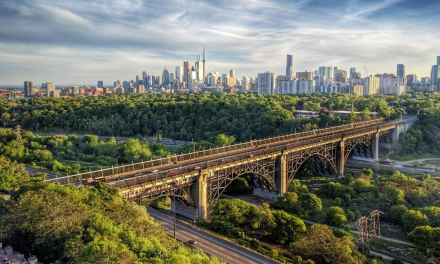For decades, Alberta’s urban centres have been the magnets, drawing in residents with promises of bustling economies and vibrant city life. But a tide is turning, and whispers of a different Alberta are starting to gain traction. Smaller towns, once seen as sleepy outposts, are emerging as potential havens for those seeking a different pace, a closer connection to nature, and a more affordable lifestyle.
The Migration Landscape:
Alberta’s migration story is complex. While Calgary and Edmonton continue to see growth, smaller towns are experiencing mixed fortunes. Some, like Cochrane and Okotoks near Calgary, have witnessed a surge in newcomers drawn by proximity to the city and a slower pace. Others, further afield, face challenges like declining populations and limited job opportunities.
But there’s a growing interest in these very challenges. Remote work opportunities, fueled by the pandemic, are blurring the lines between urban and rural life. People are increasingly valuing affordability, access to outdoor recreation, and a sense of community, all factors that smaller Alberta towns offer in spades.
The Potential for Smaller Towns:
So, what does it take for a smaller town to become a magnet for new residents? It’s not just about scenic landscapes and charming Main Streets. The key lies in creating a thriving ecosystem that caters to the needs of this new wave of potential residents.
- Embracing Remote Work:
High-speed internet access is no longer a luxury; it’s a necessity. Investing in robust internet infrastructure is crucial to attract remote workers who seek the flexibility and affordability of smaller towns.
- Cultivating Entrepreneurship:
Creating an environment that fosters entrepreneurship is key. Incubators, mentorship programs, and access to capital can empower local residents to create jobs and diversify the economy.
- Building Community:
Strong social connections are vital for newcomers to feel welcome and integrated. Fostering a vibrant community through events, clubs, and initiatives that celebrate local culture and heritage can make a big difference.
- Enhancing Amenities:
While the charm of a small town lies in its simplicity, access to essential amenities like healthcare, education, and childcare is crucial. Investing in these areas demonstrates a commitment to attracting and retaining residents.
- Embracing Sustainability:
Sustainability is a growing concern for many Canadians. Highlighting environmental initiatives and showcasing a commitment to green living can make a smaller town even more appealing.
Challenges and Opportunities:
The path for smaller Alberta towns won’t be easy. Addressing issues like housing availability, attracting and retaining skilled professionals, and ensuring long-term economic viability requires a collaborative effort from local communities, governments, and businesses.
However, the potential rewards are significant. A vibrant network of smaller towns can contribute to a more balanced and sustainable future for Alberta, offering residents diverse lifestyles and enriching the province’s cultural tapestry.
The migration patterns are shifting, and Alberta’s smaller towns have a chance to seize the opportunity. By embracing the needs of the new generation of residents and fostering a thriving ecosystem, they can become beacons of possibility, attracting not just newcomers, but a brighter future for the entire province.
Pritish Kumar Halder, a passionate writer and urban enthusiast, is fascinated by the evolving landscape of Canadian real estate and the stories it tells. He believes that smaller towns have the potential to become vibrant hubs of opportunity, offering a unique blend of affordability, community, and connection to nature.










